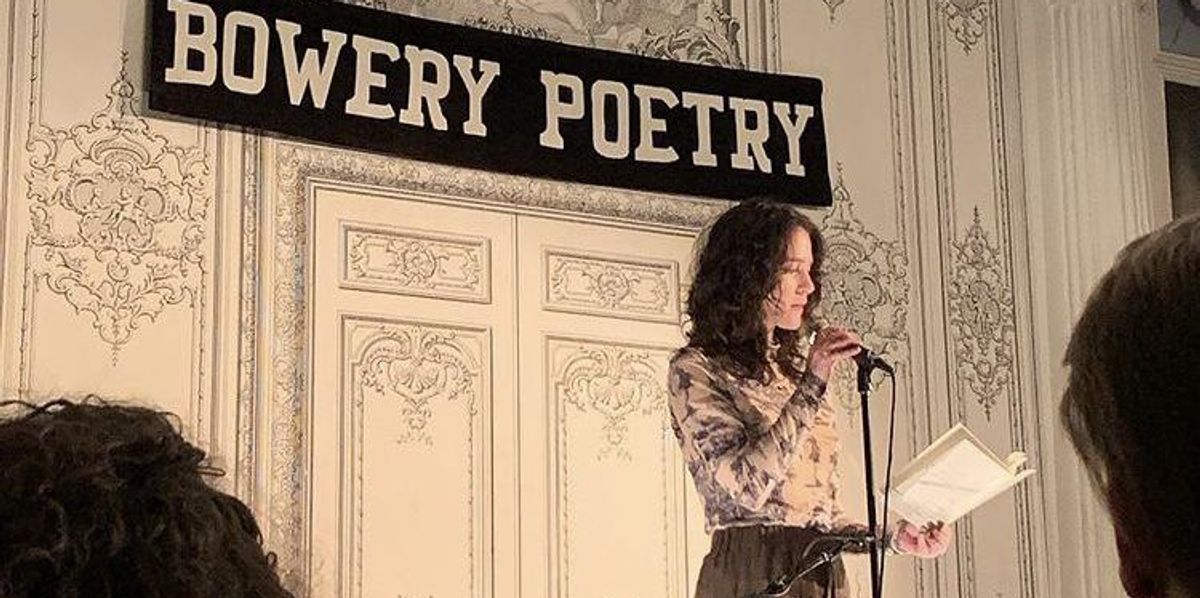Contemporary Dancer Cori Kresge Uses Dance and Poetry to Make Sense of Life
Plenty of people have described dance as “poetry in motion.” But for Cori Kresge, the relationship between poetry and dance goes deeper.
When not in a pandemic, Kresge performs with a number of contemporary artists, like Rashaun Mitchell + Silas Riener, Rebecca Lazier and Xavier Cha. A former member of the Merce Cunningham Repertory Understudy Group, she was also featured in the 2019 3D film Cunningham, and has taught Cunningham technique around the globe.
But dance audiences may be surprised to learn that Kresge is also a working poet. Her collection isn’t devotion won the No, Dear/Small Anchor Press first chapbook contest in 2019. The short publication reflects on Kresge’s upbringing in a spiritual cult.
Dance Magazine
spoke with Kresge about what it’s like to be both a dancer and a poet, and how the two crafts inform each other.

What was your journey to dance and poetry?
I was 2 or 3 when my parents put me in ballet lessons back in Cincinnati. I was very passionate about it as a child, trained a lot, but I grew up in a kind of cult community which had a lot of strict ideas about dance, so I stopped dancing from the ages of 12 to 18. Poetry and writing have always been present—it was actually a big part of my upbringing.
I started working with the choreographer Wendy Osserman as a freshman in college. That feels like when both dance and writing began to shift into an investigative practice. Up until that point, I studied ballet and didn’t really know anything else. Wendy introduced me to more improvisational practices, and she would have me write during rehearsal. We’d stop moving and sit and write for a while.
What draws you to the two forms?
Both can be very personal and private practices for me, something that helps me process myself, my history. On a larger scale, both dance and writing are the ways that I try to make sense of life, the world and how the universe works.
They both feel like the purest, most immediate ways that I can participate in a conversation that’s bigger than myself. I crave connection, I crave intimacy, and dance and writing are how I find that. I want to be in conversation with humanity; I want to be adding my little voice to this much bigger choir of truth.
What are the biggest differences?
They relate to time and space differently. Dance is this very immediate and temporary medium—it happens and then it’s over. I love that feeling. I love when I get to see my audience and be in the moment with them.
Writing isn’t permanent in the grand scheme of time, but it’s more permanent than dance. I don’t necessarily get to meet my reader or know how they felt. I like knowing that maybe someone will read something I wrote some day in the future. My voice is a time traveler.
How do you balance your time and creative energy between dance and poetry?
I find being part of a workshop or a buddy system is really valuable. I actually have a workshop I’ve been hosting that pairs people up. That accountability is really helpful.
For me, both dance and writing are important to process everything. It’s not such a big challenge to find time for it. I need to do it or else I don’t feel right. The harder balance for me is finding a way to make a living.
Do you think more dancers should write poems?
Yes! Dancers have a rich inner world. The best performers have a lot going on inside. Nurturing that by exploring writing could be really wonderful.
I also want dancers to feel confident that they have permission to be writers. You don’t need a special license or degree to do it; you just do it. For a long time, I got hung up on feeling intimidated, that I was not legitimate in the writing world because I was a dancer. Finally, I had to just drop that way of thinking because it wasn’t true and it wasn’t helpful.
Are there certain poets you would recommend to dancers?
There are other dancemakers who write so beautifully: Yvonne Rainer, Deborah Hay, Susan Rethorst. A lot of dancers have collaborated with Anne Carson.
Purely as poets that I’m interested in, there’s just so many: Alice Notley, Ocean Vuong, Tony Hoagland, Lydia Davis, Wisława Szymborska, Eileen Myles, Ariana Reines, Dean Young, CAConrad. Right now, I’m reading Terrance Hayes’ American Sonnets for My Past and Future Assassin. I’m really into that.
What’s next?
I have a few different collections that are coming together. One of them is actually a collection of dance poems. I started a practice of writing a poem after performing. It would often be a kind of revelation about what the dance was about from the inside, from my perspective as a performer. They are weird. I don’t know if anyone will like them, but I’m writing them because it’s fun and wild for me to try to put it into words.




